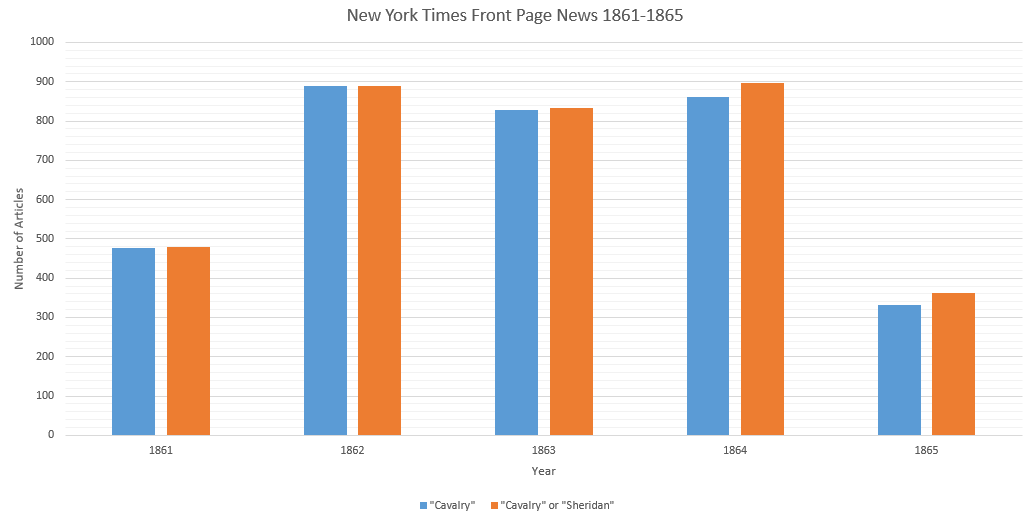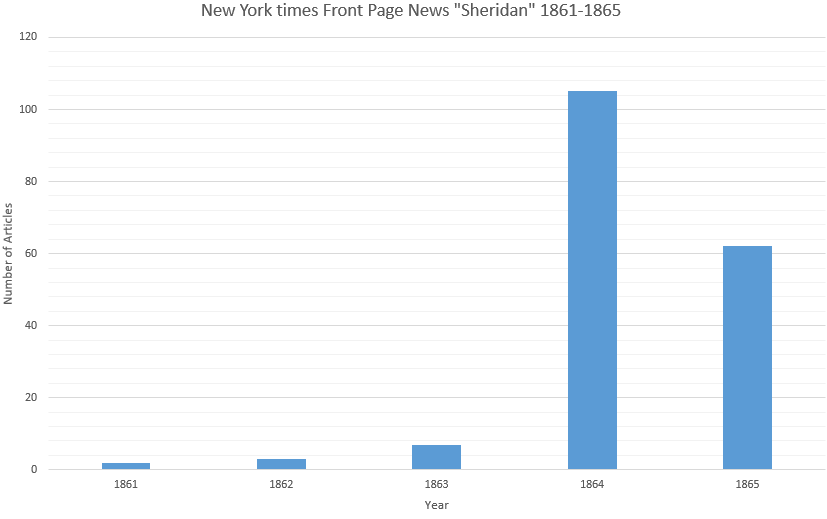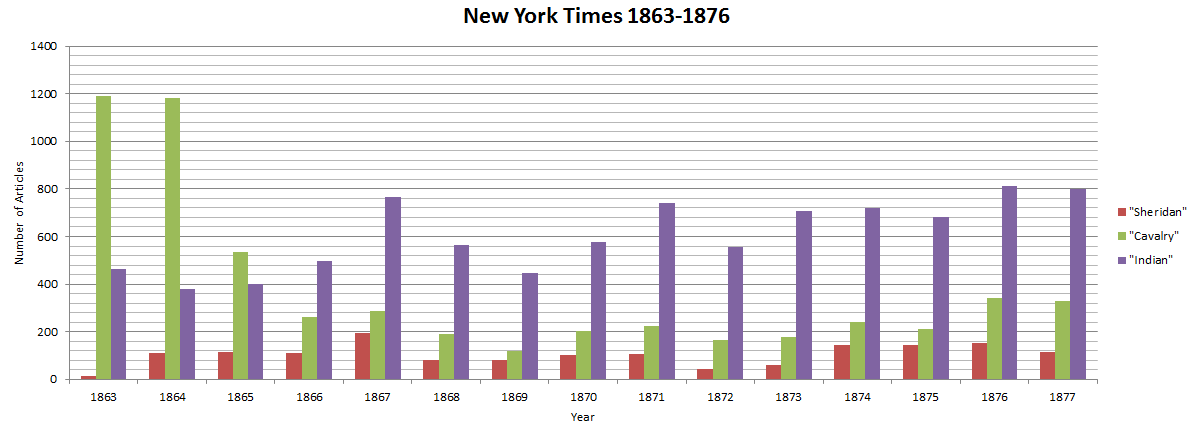Public Discourse
Newspapers of the 1800's: The shaping public opinion on the Cavalry and Indians
The Newspapers of the nineteenth century changed dramatically over time. In the first decades of the century the press played a prominent role in politics, many of the editors of papers served as politicians of some kind (Dicken-Garcia, 30). These politicians and the editors of these publications used the news as a form of campaigning for politics by using the stories rather than going around their town or state campaigning in the traditional ways. Because of this role in politics, many of the papers of this period pandered and were targeted for the members of government and the elites. Many of these papers relied on funding or patronage from the wealthy class which made their audience very specific. By the 1850s the press had begun to be an influential force in agenda setting. Craig Miner's Seeding Civil War: Kansas in the National News is an excellent examination of the role newspapers played in dividing our nation prior to the Civil War. Miner shows how during this time in American history the reading of the newspaper had become a nationwide habit. As more people read these papers there was a shift to a commercial culture that sold "ideas through a national network of standardized knowledge and information" (Miner, ii). In his analysis of Kansas Miner shows how towns could have a variety of different papers presenting different opinions to the people. These opinions were reflective of the Editor's view and meant to persuade the audience and shape their opinions. Miner's work is an example of how newspapers influenced the opinions of the people and even national events. An analysis of newspapers and their impact on public opinion is prudent to history because newspapers were the opinion makers in the media that used language and image to frame political debates in ways that fuel the spark of sectional discord prior to the Civil War.
During this period and into the Civil War there were numerous changes to the press that shifted its target audience. The newspapers ceased to target the rich and now focused on informing the individual citizen (Dicken-Garcia, 41). During the Civil War it became noticed that violent events were more popular and sold more papers because they drew the attention of the readers. The news became event centered focusing on major events that would draw readers attention. As such there was a dramatic growth in the number of newspapers beginning in 1860 as presses began to pop up and start reporting on the war. There was between four thousand individual papers prior to the war to being eleven thousand papers in 1880 (Dicken-Garcia, 49). At this time only the press could provide information on the war to the public, which increased the public’s dependency upon them and their influence on the public. The press became a part of families’ lives and they sought out information from newspapers to stay up to date. As the country began to reunite and went through reconstruction, the news covered in the paper began to shift to the Indians and the West however this was not the first time newspapers had covered the Native Americans. In The Newspaper Indian: Native American Identity in the Press, 1820-1890, John Coward provides an excellent examination of the way the Native Americans were portrayed in the newspapers of the nineteenth century and how these depictions created a negative public opinion of the Natives (Coward, 3-10). Coward examines a wide range of sources using specific examples from newspapers both big and small from across the country. He found that the Native Americans were often viewed as deficient in comparison to the whites and were an uncivilized people that were standing in the way of national progress. The Indians became not only a national problem but also a topic of Journalism. Coward shows how the view of the Native Americans were mirrored across the country. The Indians were an obstacle to civilization and the public wanted to remove them. Using the excellent works of previous historians who examined the role newspapers played in shaping public opinion, national events, and regional ideas, the newspaper's role in the image of the cavalry, Sheridan, and Indians proves crucial to understanding Western history. Some of the most iconic images of the West became the Cavalryman and the Indian and the way these papers contributed to the myth-making directly shaped public opinion during the 1860s and 1870s.
Seeing that newspapers were so influential in shaping public perception during this period of history, the frequency that the Cavalry, Sheridan and the Indians were covered in the news and the manner in which they were portrayed would impact public opinion. It is impossible to canvas every newspaper of the country at this time since not all of these papers exist today, have archives, are digitized, or even have physical copies remaining to examine. The New York Times , one of the longest running newspapers in the United States, was widely distributed across not only the city of New York but other northern states during the 1860s and 1870s. The graphs below draw from various search results from the NYT database. When looking for articles to convert to text documents for analysis in the future portions of this project, the Library of Congress' Chronicling America proved to be a valuable tool. Using their search features, newspapers from Montana, South Carolina, Illinois and New York between 1868 and 1877 that mentioned "Cavalry and Indians" in articles are used. Of these results a variety of newspapers were selected from various years and then converted into text documents to use in Voyant. By examining a wide range of sources and states this project is limited in quantity of examples. This approach simply is used for the sake of breadth of analysis rather than depth in order to create generalizations from the evidence that builds on the works of past historians. In this way the newspapers at this time will be used to illustrate how the discussion of the cavalry and Indians changed over time and varied regionally in the U.S.
If any of the visuals below do not load, please click on the visual's title to open a PDF file of the image, or go to the Sources page where all the visuals for this project are listed on the left hand side of your screen.
New York Times coverage: What were the people reading?

Figure 31: New York Times Front Page News 1861-1865

Figure 3: Search Results Sheridan On the Front Page of the New York Times
During the Civil War the newspapers constantly reported the events from the front lines to the civilians living distant from the war. While many of these papers were distributed and read, not every articles inside would be read by every consumer of the paper. However the front page articles typically received not only the headline for the day but arguably are the most read part of the paper. Front pages could often contain more than one article as well. Figure 31 and Figure 3 above show the results from the NYT database for the number for front page articles containing "Cavalry" or "Sheridan" in them. Throughout the war it is clear that the cavalry were covered frequently in the news. In the first year of the war alone the cavalry were mentioned on average more than once a day in front page articles. As the war preceded the frequency of front page articles only increased. At the start of the war the Union cavalry struggled so this trend is likely due to Confederate cavalry exploits that were reported like Stuart's multiple raids, the work of Nathan Bedford Forrest in the Western theater, or Mosby's Raid into the Mid-West states of the Union. However by 1864 and 1865 Sheridan was leading the Union cavalry forces and they were being used to greater effect on the battlefield than previously in the War. Sheridan had ascended through the ranks in 1863 and by 1864 was not only serving as the head of the Cavalry Corps but also was leading the Army in Virginia and defending the North from Invasion. The second graph shows that there were one hundred and five front page articles in 1864 that contained Sheridan's name in them from the New York Times alone. The first graph showing the results for both shows little difference between cavalry by itself and cavalry with Sheridan throughout this period. This can be argued is because Sheridan was commanding the Cavalry at this time and news written about them would more likely than not contain his name as well. It is interesting to note that Sheridan appeared in a front page article of the New York Times on average every three and a half days. His name was being circulated to the people and his exploits in the war told to the people. Sheridan and the Cavalry were being reported to the public during this time in large numbers. While this evidence does not show what kind of coverage the cavalry were receiving (good or bad) it is clear that they were being reported on daily. Furthermore Sheridan was making a name for himself in the public eye in the Union at this time and this coverage would follow him into the West as will be seen in the graphs that follow.
News from the West, shift in journalism

Figure 32: New York Times Search Results 1863-1877
Figure 32 visualizes the raw search results for "Cavalry", "Indian", and "Sheridan" as they appeared in articles and editorials published in the New York Times between 1863 and 1877. This graph builds off of the pervious results shown by expanding the search to encompass all articles and editorials, not just front page news, that mentioned the cavalry or Sheridan. These results also include how often the Indians were mentioned in newspaper coverage of the New York Times . This graph visualizes how over this time period the news changed and shifted between these topics. This shows how Sheridan was mentioned frequently at the end of the Civil War and throughout the late 1860s in the newspapers as he led the Union Cavalry and the Army of the Shenandoah in the Civil War and the Department of the Missouri in the West. Having these positions of authority in the military and his successes on the battlefield make it understandable why he would be mentioned so frequently. The cavalry was emphasized in the late and early 60s but by the 70s the Indian was mentioned more frequently showing a shift in the newspaper articles. While all of these topics were reported a fair amount based on the quantity of articles they are mentioned in, it is interesting to note that the cavalry and Indians mirrored each other in the frequency of which they were reported on.

Figure 33: New York Times "The Indians" Column
As the Civil War ended the country went into a period of Westward expansion and Reconstruction in the South. With this Westward expansion brought not only the U.S. Army but settlers, railroads, and technological advancements. With so many changes taking place in the West, newspapers began covering events taking place there to update their readers. These events were not only covered by their local papers but were reported far in wide, including papers in the East like the New York Times and the New York Herald to papers in the West like The Benton Record in Montana. As the tensions and conflicts with Native Americans escalated in the West, some papers took particular interest in reporting on these events. One of these papers was the New York Times . Figure 33 above shows how many times the New York Times column titled "The Indians" ran from 1866 to 1877. Following the Civil War this column focused on events pertaining to the Indians and updating the people. These articles covered Indian attacks, raids, engagements with the Army, negotiations with the U.S., and even reported on their mistreatment by Americans. This mistreatment came in the form of attacks on peaceful Indians to the murder of peaceful Indians in a western city. As the graph above shows, this column began following the Civil War and became a relatively frequent column in the paper, at times being published weekly. This column focusing on the American Indians and the West is one way that newspapers at this time drew public attention to the West. What the newspapers across the nation did with the public attention they were receiving will be examined further in the following sections.
Above is Figure 34, the Voyant Document Summary tool for all of the News Articles examined in this section of the project. For the text analysis portions of these sections four states are examined and articles pertaining to the cavalry and Indians are selected from each. These articles are listed in the tool above and their basic information including word count and sentence length is shown there. As the tool shows there is a variety of articles from a number of publications selected in order to present a broad portrayal of these topics in these newspapers. A more detailed discussion of the articles, states selected, and where they are from can be found on the next page.